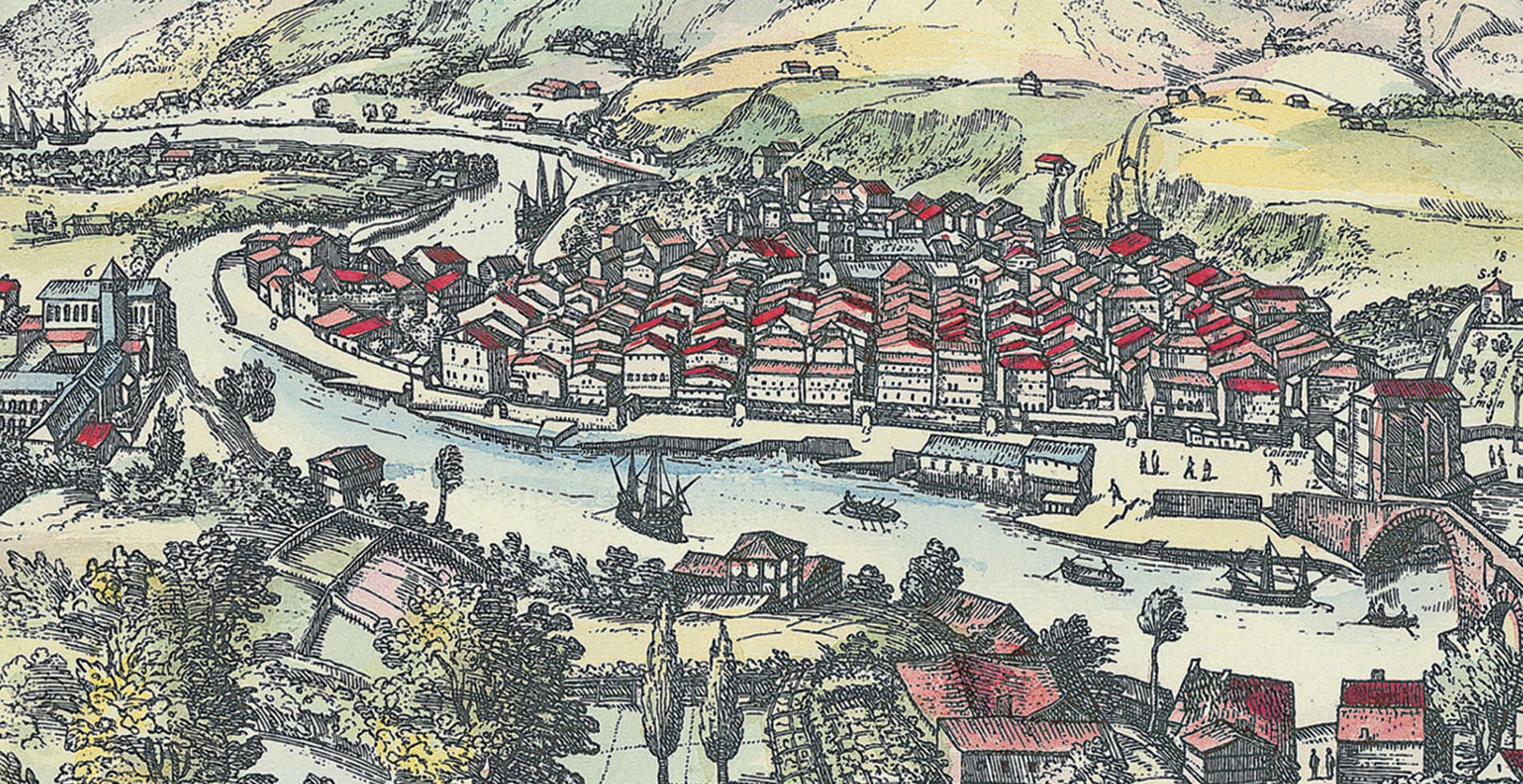Bilbao has two foundational documents. Diego López de Haro usurped the title of Seigneur of Biscay from his niece María Díaz de Haro between 1295 and 1310. On 15 June 1300 “with the approval of the Biscayans” he granted a “charter of privileges” to the inhabitants of the “Port of Bilbao” so that they could organize themselves as a Township. In 1310, María Díaz de Haro granted a new foundational charter and ordered that “the road that runs from Orduña to Bermeo,” which passed through Etxebarri, should in future “go by way of my township of Bilbao and not by another.” In addition, she strengthened Bilbao’s control over the route along the estuary to the sea.
The work by G.Braun and F. Hogenberg, Civitates Orbis Terrarum, on the cities of the world, provides a view of a developed Bilbao in 1574. From being maritime carriers, the city’s merchants became thriving intermediaries in the trade between Castile and the northern European ports (Bruges, Antwerp), and in 1511 they founded the “Consulate of Bilbao”. In 1632, a popular revolt, or matxinada, broke out against the fiscal pressure caused by the salt monopoly agreed upon by King Philip IV and against the “leading and rich people”; six leaders were hanged and garroted in 1634.
In the XVIII century the township grew socially and economically. In 1789 the naturalist G. Bowles wrote: “Bilbao is a town where one can live with great comfort and pleasure, due to its wide-reaching trade… due to the good sense with which its civil and commercial laws are made. Amongst these there is one against ingratitude, an offense that is punishable.”


